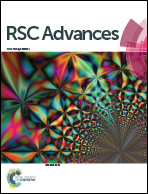The phase transfer effect of sulfur in lithium–sulfur batteries†
Abstract
Lithium–sulfur (Li–S) batteries are considered to be among the most promising energy storage technologies owing to their high theoretical capacity (1675 mA h g−1). At present, however, discharge mechanisms are complicated and remain a controversial issue. In this work, elemental sulfur, used as an electrical insulator for the cathode, was introduced into batteries for its potential chemical reactions in the electrolyte. A film, prepared by loading elemental sulfur onto glass fiber, was introduced as an interlayer in a Li–S battery. The results demonstrate that elemental sulfur may be reduced to polysulfides even when it functions as an electrical insulator for the cathode. Furthermore, it can improve the overall capacity of the Li–S battery and cycle life. This was verified by simulating the phase equilibrium of the chemical system in Li–S batteries using HSC Chemistry software. We hypothesize that the insulating elemental sulfur could be reduced by polysulfides generated on the cathode, after which they are dissolved in the electrolyte and participate in cathode reactions. This phase transfer effect of sulfur in Li–S batteries revealed a chemical equilibrium in the electrolyte of the Li–S battery, which may form a chemical path embedded into the discharge process of Li–S batteries.



 Please wait while we load your content...
Please wait while we load your content...